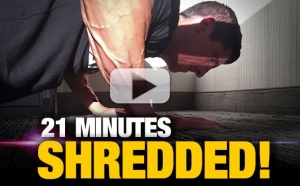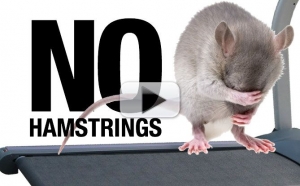
SPRINT WORKOUTS: WHY YOU SHOULD BE DOING THEM!
If you want to burn fat fast and get ripped without looking skinny and frail, then you have to move fast…literally.
And what’s the best way to do that? Sprints.
Performance athletes whose sports require sprinting are almost always very lean. World class sprinters are always lean, with lots of lean muscle mass. So, sprint training is a logical addition to your regular lifting routine.
Sprinting is one of the most athletic exercises you can do with your body. It represents an overloaded version of the more traditional jog done for cardiovascular health alone.
Sprints help you lose unwanted body fat and help build muscle at the same time because they work fast-twitch muscle fibers.
Sprint workouts burn more fat in a short period of time. Just 3 minutes of sprints can burn up to 300 calories!
HOW MANY CALORIES DOES SPRINTING BURN?
Your body weight influences how many calories you burn running. The heavier you are the more calories you’ll burn.
A 160-lb. guy burns about 180 calories every 15 minutes jogging, whereas a 200-lb. guy burns about 220 calories for every 15 minutes of jogging.
It makes sense when you think about it. It takes more energy to move more weight in the same span of time.
However, if you were to sprint for 3 minutes straight instead of a dirt-slow pace, you would burn anywhere from 275 to 320 calories.
Guys, let me emphasize that we are not talking about a traditional cardio routine for cardiovascular fitness. Yes, you will get the cardio benefit, but it will come from the benefits of the sprint intervals I’m about to describe.
Most of us would pass out after 3 straight minutes of sprints. But there is a way to do it, and that’s by using a high-intensity interval training approach.
HIGH-INTENSITY INTERVAL SPRINT WORKOUT
You can get the benefits of the full 3 minutes of sprints by dividing it into high-intensity intervals.
With a lower intensity jog or walk between near-maximal sprints, an entire workout will last 10 to 15 minutes, accounting for short recovery periods between sprints.
Here’s how to structure your sprint interval workout.
SET UP FOR YOUR SPRINTS
Find a spot that’s about 40 yards long for your sprints. That could be the street outside your house, a parking lot, or a local high school track.
You’ll need a stopwatch or timer. You can use the one that’s on your smartphone.
Start by performing a few jogs to warm up at a comfortable pace, gradually increasing your speed until you get to about 90 percent of your max effort. Do most of your sprints at that level of exertion, with those last few sprints being all-out.
HILL SPRINTS: ADD INCLINES AND SPEED FOR MORE INTENSITY
You can get even more out of your sprints by adding incline and faster speeds to turn them into hill sprints.
Speed and incline add intensity and work fast-twitch muscle fibers that generate power. The incline also puts more load on the posterior chain that tends to be undertrained anyway.
Sprint up your 30-to-40 yard hill sprint, and then walk down, or return at a comfortable pace using what I call a sprint-walk-jog to return to your starting point for some active recovery time.
Walk half the way, and then jog the rest of the distance before you turn around and sprint again.

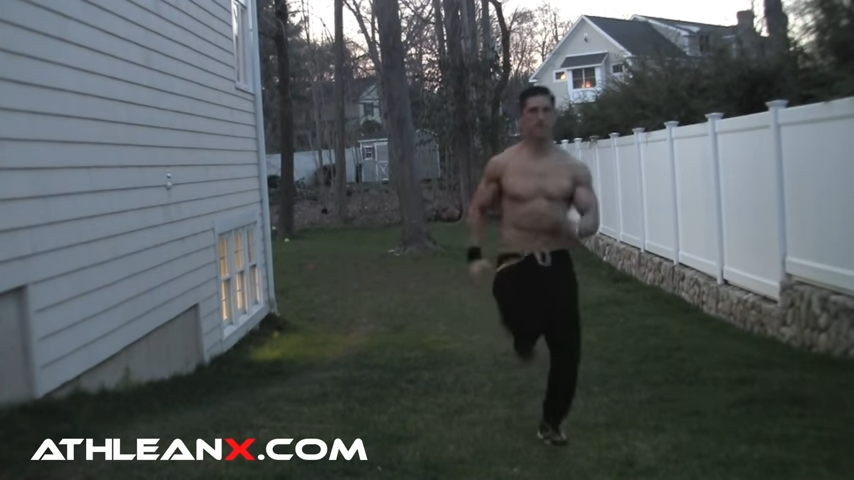
Regardless of how you return to your starting line, sprints followed by active recovery time is the key. Minimize the rest intervals. Don’t wait very long before your next sprint. Leave only a few seconds for recovery between sprints.
Try starting the clock at 10 minutes and just keep running up and down that hill so that your total time spent sprinting ends up being about 3 minutes.
SPRINT 90 PERCENT MAXIMUM EFFORT, THEN ALL-OUT EFFORT
Most of your sprints should be 90 percent of your max effort using good running form.
Pump your arms in the sagittal plane, front to back, not across your body, and drive forward with your knees. This will train your running form as you burn calories.

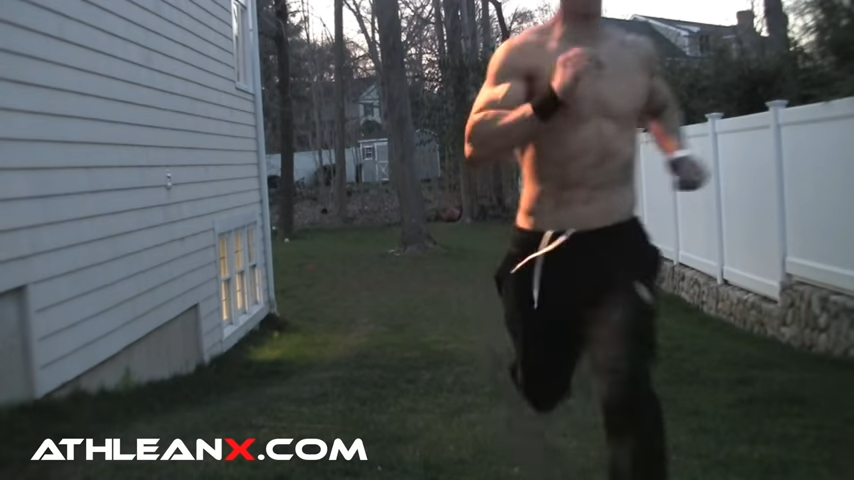
FINISH USING MAXIMAL EFFORT
Toward the end of your sprint workout, you can sacrifice form and say “I’m going to just run as hard as I can possibly freaking run, and push with as much force as I can into the ground.”
The focus of the all-out maximum effort sprints is to develop strength, particularly in the posterior chain. A couple rounds of high percent maximum hill sprints will get you feeling the burn, amp up fat burning and boost heart rate as well.
You don’t need to do this workout every day. I actually like to do my sprint program twice a week for 10 to 15 minutes each.

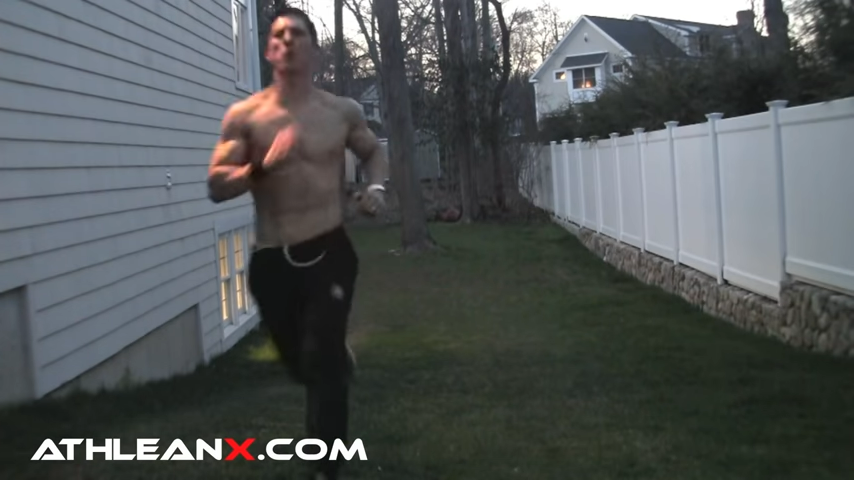
If you’re not sprinting now, you’ve got to start, even if it’s not pretty in the beginning.
You already know from your work in the weight room that overload is important, and those slow, steady-state cardio sessions on the treadmill are not providing overload.
Performing this sprint program a couple of times each week will help burn that unwanted body fat without sacrificing muscle, and should be a part of your overall fitness program.
Be sure to warm up before your sprint routine, and especially before you apply max effort to avoid acute injuries like hamstring pulls.
If you’re looking to burn fat and build muscle, look no further than our ATHLEAN-X programs.

- It’s important to move fast, to burn calories and fat.
- Sprinting does this better than walking or jogging because it’s higher-intensity.
- Sprints engage fast-twitch muscle fibers and add overload not present in walking or jogging, especially for the posterior chain.
- Athletic performance is not the goal of this sprint workout, nor is cardiovascular health, although both should improve as a result.
- Sprint interval training breaks sprint workouts down into “bite sized” increments, allowing you to extend your sprint workout. With active recovery time between sprints, you enhance the training effect.
- Sprinting distance should be 30 to 40 yards. Sprint one direction and return to the starting line at a slower pace before sprinting back again. Run at about 90 percent maximum effort for most of the workout and go all-out for the last few sprints.
- Increasing the speed of the sprint and adding uphill sprints increases intensity.
- Observe good form during most of the sprint workout and use maximal effort toward the end to train for power and overload. Remember to always warm up to prevent injury.

Jeff Cavaliere M.S.P.T, CSCS
Jeff Cavaliere is a Physical Therapist, Strength Coach and creator of the ATHLEAN-X Training Programs and ATHLEAN-Rx Supplements. He has a Masters in Physical Therapy (MSPT) and has worked as Head Physical Therapist for the New York Mets, as well as training many elite professional athletes in Major League Baseball, NFL, MMA and professional wrestling. His programs produce “next level” achievements in muscle size, strength and performance for professional athletes and anyone looking to build a muscular athletic physique.

































